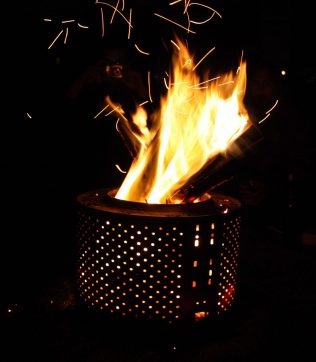Soot

Collect any ash that is left over from bonfires and keep it after it cools down to supply the fruit bushes in the spring with a potassium feed. Potash is a major nutrient that is essential for good fruiting and flowering and it also helps the plants get through the winter. It can also be a useful additive to the compost heap or can be applied directly to fallow ground and dug in. It also has a liming effect, so wood ash can remedy excessively acidic soils.
Last week we had our chimneys swept – my Dad was staying and asked if I was going to keep the soot – I wasn’t sure what the benefits of it were – there seems to be a variety of answers to this question; it certainly needs to be ‘pure’, the sweep said, much of the debris from the chimney was not good for the garden, but he left me with a small bag of soot. Soot is not the same as ash, soot is more like charcoal – pure carbon with some volatile compounds. That’s why it’s good to let the soot weather before using it – the volatile compounds evaporate and what’s left is like fine charcoal.
These are the benefits that I found – does anyone else have any experience of using soot?
- It darkens the soil, making it warm earlier
- It retains nutrients that rainfall would otherwise wash away, (because it is electrostatic).
- It has a very large porous surface area, so on an organic allotment all the soil fungi and bacteria and other life have a safe refuge where they can proliferate. This is particularly important for mycorrhyzal fungi, which live for 32 days, then die and leave nitrogen and carbon in the soil, building up humus.
- Humus retains water as it is like a gel, so theoretically soot-enriched soil will need watering less often.
- It deters slugs and snails.





No Comments
Add a comment about this page